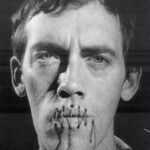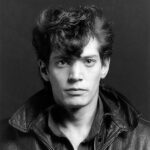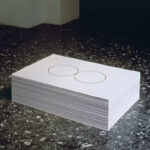This summer, writer and curator Alex Fialho led an opportunity for New Yorkers to see the ongoing impact HIV has on their city. He created and led a tour based on Ira Sachs’ 9 minute film Last Address (2010). Below he talks about the experience, and the community he was able to create.
Ira Sachs’ 9 minute film Last Address is a subtle, poetic meditation on the loss that the AIDS epidemic ravaged on the queer arts community in New York City. Last Address consists of a stream of scenic street views of the last residential addresses where twenty-eight celebrated artists and filmmakers lived in New York City before they passed away as a result of AIDS-related complications. Birds chirp, bikers pass, and taxis honk in Sachs’ exterior shots in front of the former haunts of LGBT creatives; despite the filming of this elegiac tribute, NYC life seems to proceed as usual, a contrast that speaks to the living history of the spaces on which Last Address meditates.
For the experimental film platform Dirty Looks’ On Location this July, I organized a screening of Sachs’ Last Address and a tribute walk to five of the last residential addresses highlighted in the film: Cooke Mueller (285 Bleecker Street), Keith Haring (542 La Guardia Place), David Wojnarowicz and Peter Hujar (189 2nd Avenue), Robert Mapplethorpe (35 W 23rd Street), and Felix Gonzalez-Torres (London Terrace, 405-465 W. 23rd Street). Though these may be the last addresses where each artist lived, the life of their work continues to address, inspire, and live with a new generation today.
For the tribute walk, I invited a curator, writer, or artist to activate these sites by reading on each doorstep from writings that related to the artist who had called the address home. I also asked Win Mixter, a close friend and talented graphic designer, to conceive of drawings that we could leave to mark each reading. Win produced five floral drawings with the face of each artist as the bud of the flower and the iconography of their practice as the petals: “Dr.” Cookie Mueller stemmed into stethoscopes and pink flamingos; Keith Haring stemmed into radiant children; David Wojnarowicz stemmed into crawling ants and sewn lips; Robert Mapptethopre stemmed into a bullwhip and bulging phalluses; and Felix Gonzalez-Torres stemmed into light strings. In tribute, we left the drawings at each site, paired with a single living red rose.
The IFC Center, where Sachs presents the monthly Queer/Art/Film screening series, graciously hosted our screening of Last Address. From IFC, the group of approximately twenty-five tribute walkers progressed to each of the five sites, making literal the idea of Dirty Looks as a “roaming” screening series.
At Cooke Mueller’s address of 285 Bleecker Street, a double-decker NYC tour bus waiting for a red light caught moments of Dirty Looks Creative Director Bradford Nordeen reading a salacious scene from Ask Dr. Mueller. Appropriately, the moment I caught myself tearing up while reading from John Gruen’s Keith Haring: The Authorized Biography in front of Haring’s last address of 542 LaGuardia Place, the weather responded, and it began slowly raining, with raindrops hitting the pages as I read. By the time artist Scott Valentine fervidly read from David Wojnarowicz’ Close to the Knives: A Memoir of Disintegration in front of Judson Memorial Church, the rain had picked up, but it only brought our group of commemorating queers tighter together under our umbrella coverings. Two blocks after playwright A-lan Holt read poetically from Patti Smith’s Just Kids at Robert Mapplethorpe’s last address of 35 West 23rd Street, our tribute walk led us full circle past one of Robert and Patti’s first addresses, the Chelsea Hotel at 222 West 23rd Street. The tribute walk concluded with curator Aaron Cator’s reading from A Selection of Snapshots Taken by Felix Gonzalez-Torrez at Felix Gonzalez-Torres’ last address of London Terrace, where the light strings glowing in the window of a nearby apartment resonated with FGT’s beloved practice.
In Last Address, Sachs intimately links the inextricable social and sexual histories of creative scenes through a site-specific awareness of queer histories and narratives in our everyday environment. In a similar way, the Last Address tribute walk highlighted these intimate locations of home in our very own backyard, New York City. The screening and tribute walk proved to be a lovely, lively remembrance, one that we hope to make an annual event.
Relevant links:
Last Address on vimeo, with further information about each of the artists highlighted in the film.
Win Mixter Last Address tribute walk drawings.

















